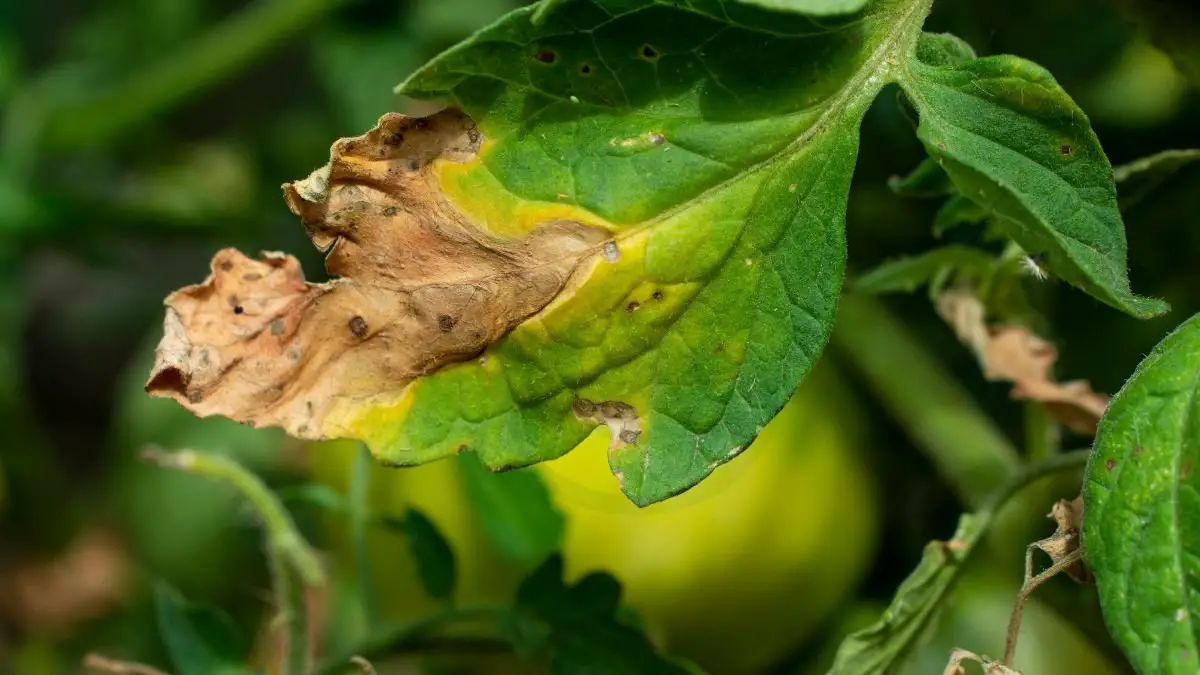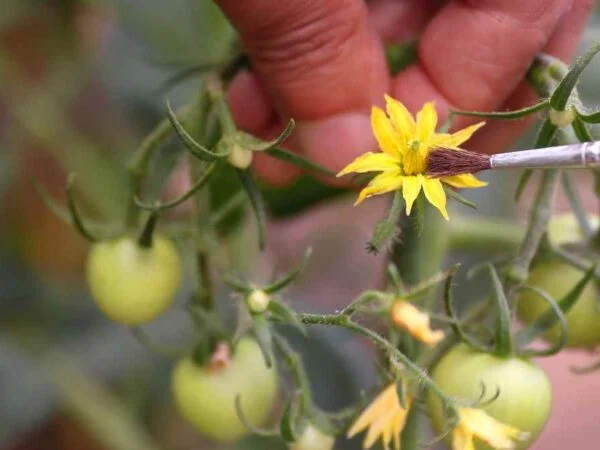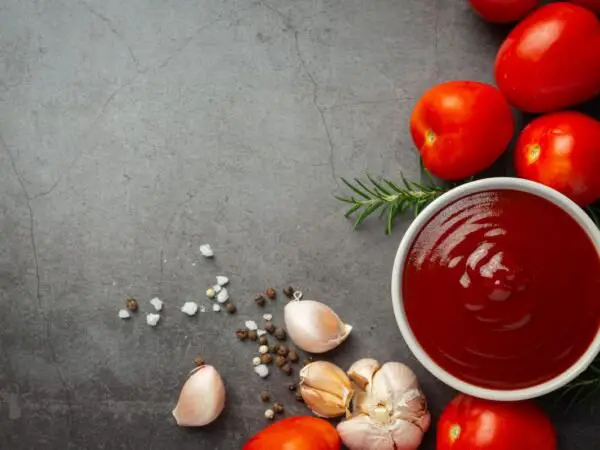Why do tomato plants get yellow leaves? Yellowing leaves on tomato plants can be caused by various factors, including nutrient deficiencies like potassium deficiency, pests, diseases such as fusarium wilt, and environmental stressors. Determining the specific cause of yellowing leaves, such as plant diseases, fungal disease, fusarium wilt, or potassium deficiency, is crucial for effective treatment and prevention.
Nutrient deficiencies, particularly nitrogen, can result in yellowing leaves. Additionally, pests like aphids and whiteflies can suck sap from the leaves, causing them to turn yellow and eventually die. Diseases such as tomato yellow leaf curl virus and bacterial wilt can also lead to yellowing foliage of green leaves. Environmental stressors like overwatering, underwatering, or extreme temperatures can further exacerbate the issue of plant diseases. Proper diagnosis and management of these factors are essential for maintaining healthy tomato plants.
There are several methods to address yellowing leaves on tomato plants, including adjusting nutrient levels, implementing pest control measures, and providing optimal growing conditions. Additionally, regular monitoring and prompt action can help prevent future occurrences of yellowing leaves and promote vigorous plant growth and fruit development.
Key Takeaways
- Decoding Yellow Leaves: Understand the reasons behind tomato plants developing yellow leaves to address the issue effectively.
- Nutrient Deficiency: Ensure your tomato plants receive adequate nutrients like nitrogen, phosphorus, and potassium to prevent yellowing of leaves.
- Watering Techniques: Maintain proper watering practices to avoid overwatering or underwatering, which can lead to yellow leaves on tomato plants.
- Disease Management: Implement disease management strategies to protect tomato plants from infections that cause leaf discoloration.
- Pest Control: Regularly inspect and control pests like aphids or spider mites that can damage tomato plants and cause yellowing of leaves.
- Preventive Measures: Take proactive steps such as proper spacing, mulching, and regular pruning to prevent yellow leaves on tomato plants.
Decoding Yellow Leaves
Common Causes
Yellow leaves on tomato plants can be attributed to various factors such as nutrient deficiencies, overwatering, pests, diseases like late blight, or environmental stress. Understanding these common causes is crucial for effective troubleshooting. Addressing them promptly is essential to maintain the overall health of the plant.
One of the primary reasons for yellowing leaves on tomato plants is nutrient deficiencies, particularly nitrogen, iron, or magnesium. Overwatering can lead to root rot, causing yellow foliage due to the plant's inability to absorb nutrients properly. Pests like aphids and whiteflies can also cause damage, resulting in yellowed leaves. Identifying and rectifying these issues promptly is vital for the plant's well-being.
New Plant Adjustment
When newly planted tomato seedlings experience leaf yellowing, it is often a sign of transplant shock. To help plants adjust to their new environment, ensure they receive adequate sunlight, water, and nutrients. Patience is key during this adjustment period as plants acclimate to their surroundings and establish strong root systems.
To assist tomato plants in overcoming transplant shock and leaf yellowing, consider providing a balanced fertilizer rich in essential nutrients. Avoid over-fertilizing, as this can exacerbate the issue. By allowing the plant time to adapt gradually and providing optimal growing conditions, you can support healthy growth and minimize leaf discoloration.
Seasonal Changes
Seasonal variations play a significant role in determining the color of tomato plant leaves. During hot summer months, excessive heat can cause leaves to turn yellow or even brown due to stress. In contrast, cooler temperatures in fall may lead to natural leaf senescence and color changes as plants prepare for winter dormancy.
Managing seasonal changes effectively involves adjusting care practices based on weather conditions. Providing adequate shade during hot spells and ensuring proper hydration are essential steps in preventing leaf yellowing due to seasonal factors. By monitoring environmental cues and adapting care routines accordingly, you can help maintain vibrant green foliage throughout the year.
Nutrient Deficiency
Identifying Signs
Tomato plants with yellow leaves may indicate nutrient deficiencies like nitrogen or iron deficiency. Look for pale green or yellowing leaves as signs of potential issues. Early detection is crucial to address nutrient deficiencies promptly.
Essential Nutrients
Nitrogen
Nitrogen plays a vital role in maintaining healthy tomato plants and leaf color. Nitrogen deficiency can cause yellow leaves due to reduced chlorophyll production. Avoid excess nitrogen, which can also lead to yellowing. Test soil regularly and consider organic nitrogen sources for optimal plant growth.
Potassium
Potassium is essential for proper tomato plant growth and leaf coloration. Potassium deficiency manifests as yellowing, especially in older leaves. Ensure adequate potassium levels through balanced fertilization to prevent yellow leaf issues in tomatoes.
Magnesium
Magnesium is crucial in preventing yellow leaves on tomato plants by aiding in chlorophyll production. Magnesium deficiency results in interveinal yellowing of leaves. Apply magnesium-rich fertilizers or Epsom salts to maintain healthy magnesium levels for vibrant foliage.
Corrective Measures
To address yellow leaves on tomato plants, take immediate action by:
- Testing soil nutrients and pH levels.
- Adjusting fertilizer application based on nutrient deficiencies.
- Providing targeted treatments like foliar sprays for quick nutrient absorption.
- Ensuring proper watering practices to support nutrient uptake and overall plant health.
Watering Techniques
Overwatering Issues
Overwatering can lead to detrimental effects on tomato plants, such as leaf yellowing. Signs of overwatering include wilting, yellowing lower leaves, and root rot. To prevent overwatering, allow the soil to dry between waterings and ensure proper drainage.
Underwatering Signs
Insufficient watering can also cause yellow leaves in tomato plants due to stress and nutrient deficiencies. Signs of underwatering include drooping leaves, dry soil, and leaf curling. To avoid underwatering, water deeply but infrequently to promote healthy root growth.
Optimal Watering
Providing the right amount of water is crucial for tomato plants to thrive without developing yellow leaves. Different growth stages require varying amounts of water; seedlings need more frequent watering than established plants. To achieve optimal watering conditions, monitor soil moisture levels regularly and adjust watering frequency accordingly.
Disease Management
Common Diseases
Tomato plants can develop yellow leaves due to common diseases such as early blight, late blight, and septoria leaf spot. These diseases weaken the plant's immune system, affecting its ability to photosynthesize efficiently.
Early blight manifests as dark spots with concentric rings on older leaves, leading to yellowing and premature defoliation. Late blight, a destructive disease, causes rapid browning of leaves and stems. Septoria leaf spot results in small, circular lesions with dark borders on lower leaves.
To manage these diseases effectively, regular pruning of infected foliage is crucial. Implementing proper crop rotation practices can also help reduce disease pressure in subsequent seasons.
Disease Identification
Identifying specific diseases causing yellowing in tomato plants requires keen observation of visual symptoms. Early blight displays dark concentric rings on leaves, while late blight shows water-soaked lesions with white mold growth. Septoria leaf spot exhibits small brown spots with gray centers.
If unsure about disease identification, seeking assistance from local agricultural extension services or plant clinics is advisable. They can provide accurate diagnosis based on visual symptoms observed on the plant.
Prevention Strategies
Preventing diseases that lead to yellow leaves on tomato plants involves maintaining good air circulation around the plants by spacing them appropriately. Avoid overhead watering to minimize moisture on foliage which can promote disease development.
Implementing a regular fungicide spray schedule, especially during humid weather conditions, can help prevent the spread of fungal diseases like early blight and septoria leaf spot. Furthermore, practicing good garden hygiene by removing debris and weeds can reduce disease pressure.
Pest Control
Identifying Pests
Pests contribute to yellowing of tomato plant leaves by feeding on them, disrupting nutrient absorption. Common pests include aphids, spider mites, and whiteflies. Early identification of pest infestations is crucial for effective control.
e pests target tomato plants specifically, causing damage by sucking sap from the leaves and stems. To identify pest infestations early, regularly inspect plants for signs like discolored or wilting leaves, visible insects, or sticky residue.
Natural Remedies
Using natural solutions like neem oil or insecticidal soap can effectively treat yellow leaves on tomato plants. Organic remedies offer benefits such as environmental friendliness and safety for beneficial insects in the garden.
- Neem oil: Acts as a repellent against pests.
- Insecticidal soap: Disrupts pests' cell membranes, leading to their demise.
Chemical Treatments
Chemical treatments play a vital role in managing yellow leaves caused by pests or diseases. It is essential to use herbicides or pesticides safely and responsibly to avoid harming beneficial organisms in the ecosystem.
When selecting chemical treatments for tomato plants, consider factors such as the type of pest or disease present, the stage of plant growth, and environmental impact. Always follow instructions carefully to ensure effectiveness without adverse effects on the environment.
Cultural Practices
Proper Planting
Proper planting techniques are crucial for healthy tomato plants. Guidelines on planting depth, spacing, and soil preparation ensure optimal growth. Maintaining these practices can prevent yellowing of leaves.
- Plant tomatoes at the right depth
- Space them adequately for proper air circulation
- Prepare soil with organic matter for nutrient-rich conditions
Sunlight Requirements
Sufficient sunlight is essential for tomato plant growth and leaf color. Inadequate or excessive exposure to sunlight can result in yellow leaves. Optimizing sunlight exposure is key for healthy plants.
- Ensure tomatoes receive 6-8 hours of sunlight daily
- Avoid intense midday sun to prevent leaf burn
- Use shading techniques in extreme heat conditions
Soil Health
l health plays a vital role in preventing yellow leaves on tomato plants. Soil pH and nutrient levels directly impact plant growth and leaf coloration. Maintaining optimal soil conditions is crucial for plant health.
- Test soil pH regularly and adjust as needed
- Provide adequate nutrients through fertilization
- Mulch around plants to retain moisture and regulate temperature
Environmental Factors
Temperature Stress
Temperature fluctuations can impact tomato plant leaves, causing them to turn yellow. Signs of temperature stress include wilting and curling leaves. To protect plants, provide shade during hot days and cover them during cold nights.
Frost Damage Frost damage poses risks by turning tomato plant leaves yellow. Symptoms include blackened areas on leaves and stunted growth. Prevent frost damage by covering plants with cloths or bringing them indoors during cold spells.
Preventive Measures
Regular Monitoring
Regular monitoring of tomato plants is crucial to prevent yellow leaves. By observing plant health indicators like leaf color and size, issues can be addressed promptly. A monitoring checklist helps track plant condition and growth.
Adequate Fertilization
Proper fertilization plays a key role in preventing nutrient deficiencies and leaf yellowing in tomato plants. Balanced fertilization is essential for maintaining plant health. Guidelines for selecting and applying fertilizers ensure optimal plant nutrition.
Environmental Control
Environmental factors significantly impact tomato plant health and leaf color. Controlling factors such as humidity levels and airflow is vital for plant growth. Tips for creating an optimal growing environment include proper ventilation and moisture control.
Advanced Care Techniques
Drip Irrigation Benefits
Drip irrigation offers precise watering for tomato plants, reducing water wastage and promoting root growth. It prevents issues like overwatering, which can lead to yellow leaves. By delivering water directly to the roots, drip irrigation ensures efficient water usage.
Setting up a drip irrigation system involves placing hoses along the plant rows with emitters that release water slowly. This method helps maintain consistent moisture levels in the soil, preventing both under and overwatering. Regularly checking the system for clogs or leaks is crucial for optimal plant health.
Mulching Advantages
Mulching around tomato plants provides numerous benefits, including reducing the likelihood of yellow leaves caused by various factors. Mulch helps retain soil moisture, minimizing stress on the plants during hot weather conditions. It regulates soil temperature, creating a stable environment for healthy root development.
Selecting the right type of mulch, such as straw or shredded leaves, is essential for its effectiveness in preventing yellow leaves. Applying a layer of mulch around tomato plants helps suppress weed growth, ensuring that nutrients are directed towards plant growth instead of unwanted vegetation. Regularly replenishing mulch as it decomposes is necessary to maintain its benefits.
Summary
Decoding the reasons behind yellow leaves on tomato plants has equipped you with knowledge on nutrient deficiencies, watering techniques, disease management, pest control, cultural practices, environmental factors, preventive measures, and advanced care techniques. By understanding these factors, you can effectively address issues affecting your tomato plants and ensure their optimal growth and productivity. Remember to maintain a balanced nutrient supply, implement proper watering practices, monitor for diseases and pests regularly, follow suitable cultural practices, consider environmental influences, and apply preventive measures to safeguard your plants. By incorporating these strategies into your gardening routine, you can promote healthy tomato plants that thrive in your garden.
Frequently Asked Questions
Why do tomato plants develop yellow leaves?
Tomato plants can get yellow leaves due to various reasons, including nutrient deficiencies, overwatering or underwatering, diseases like early blight or fusarium wilt, pests such as aphids or whiteflies, unfavorable environmental conditions like extreme temperatures, and poor cultural practices.
How can I determine if my tomato plant's yellow leaves are due to a nutrient deficiency?
To identify if nutrient deficiency is causing yellow leaves in your tomato plant, observe the specific patterns on the leaves. For instance, nitrogen deficiency leads to overall pale green-yellowish leaves; magnesium deficiency causes yellowing between leaf veins. Conduct soil tests for accurate diagnosis and appropriate fertilization.
What watering techniques should I follow to prevent yellowing of tomato plant leaves?
Maintain proper watering practices by providing consistent moisture without waterlogging the soil. Water deeply but infrequently to encourage deep root growth. Avoid overhead watering to prevent fungal diseases. Mulch around plants to retain soil moisture. Adjust watering based on weather conditions and plant needs.
How can I effectively manage diseases that cause tomato plant leaves to turn yellow?
Prevent diseases by practicing crop rotation, using disease-resistant varieties, spacing plants adequately for air circulation, and avoiding overhead irrigation. Treat fungal infections with appropriate fungicides early on. Remove and destroy infected plant parts promptly to prevent disease spread.
What are some preventive measures I can take to keep my tomato plants healthy and free from yellow leaves?
Implement preventive measures such as maintaining good garden hygiene by removing debris, sanitizing tools, and rotating crops yearly. Monitor plants regularly for signs of stress or disease. Provide adequate sunlight, proper nutrition, and optimal growing conditions for robust plant health and reduced risk of yellowing leaves.
Image Source: Paid image from CANVA





